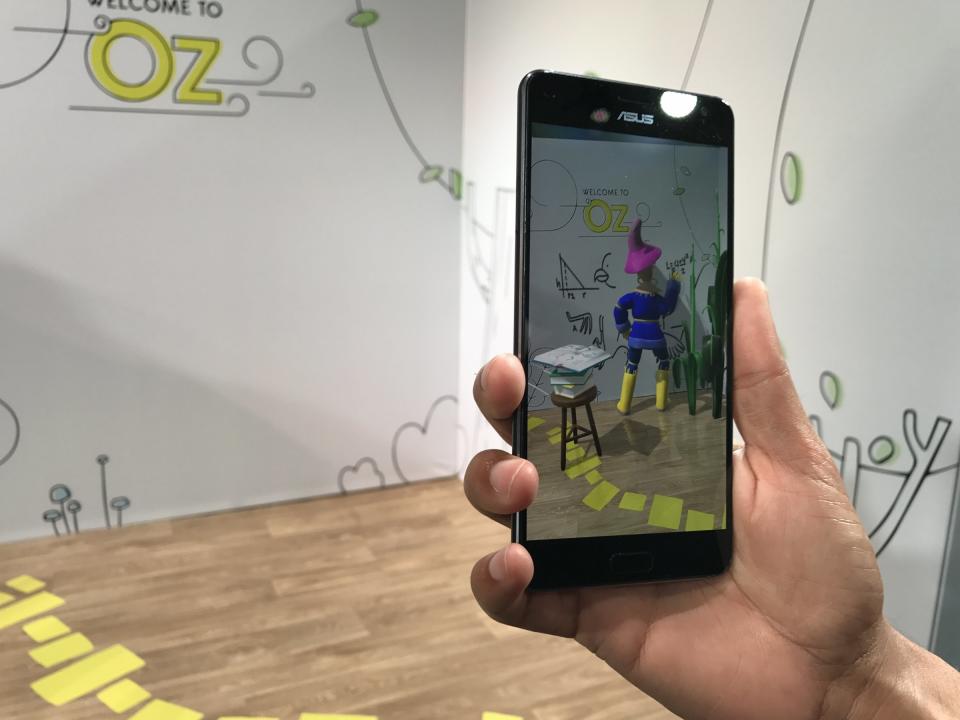Google is shutting down its ambitious project to reinvent smartphone cameras (GOOG, GOOGL)

Steve Kovach/Business Insider
Tango, one of Google's earliest experiments in augmented reality, will shut down in March 2018.
Tango let developers build cool, immersive camera-based apps for Android — but needed manufacturers to include pricey, specialized Tango cameras in their phones, which hamstrung the project.
Tango is succeeded by ARcore, a Google technology that accomplishes much of the same thing, but will work on a wider array of existing smartphone cameras.
Google has announced that it will be "turning down" Tango, its ambitious augmented-reality project for redefining what a smartphone camera can do, in March 2018.
First launched in 2014, Tango (formerly Project Tango) was a design for a camera that could actually detect depth and motion, opening up all kinds of new applications. The problem, and Tango's biggest obstacle to success, was that you needed a special, high-tech, Tango-compatible camera to take advantage — a normal camera just wouldn't do.
Tweet Embed:
https://twitter.com/mims/statuses/941730801791549440?ref_src=twsrc%5Etfw
We’re turning down support for Tango on March 1, 2018. Thank you to our incredible community of developers who made such progress with Tango over the last three years. We look forward to continuing the journey with you on ARCore. https://t.co/aYiSUkgyie
At the basic level, Tango let you do things like use a smartphone as a tape measure, since it could accurately measure distance in front of you. More advanced Tango applications would actually draw a line in a store aisle in front of you to take you straight to the item you need, or turn your real-life motion into movement in a video game.
Tango had a notable pedigree at Google, too: In 2012, it was the first graduate from Google X, the search giant's skunkworks program (now known simply as X). Then, in 2015, it became the first graduate from Google ATAP, the search giant's other skunkworks.
Tango finally came to market in 2016, as the flagship feature in the Lenovo Phab2 Pro smartphone. In 2017, Asus released the ZenFone AR, which also sported a Tango camera. However, neither phone was a particular sales sensation, and Tango failed to attract a huge number of developers.
In the meanwhile, Tango has given way to Google ARcore, a new technology in Android that does much of the same thing, letting developers built apps that project digital imagery over the real-world. However, ARcore doesn't need a special camera to work, and it's already supported on high-end Android phones like the Google Pixel 2 and Samsung's Galaxy S8.
"Whereas Tango required special hardware, ARCore is a fast, performant, Android-scale SDK that enables high-quality augmented reality across millions of qualified mobile devices," writes Google in a developer blog entry discussing the shutdown of Tango.
For its part, Apple has made augmented reality a flagship feature of the current model iPhones. In addition to its ARkit developer technology, Apple has also claimed that the cameras on the flagship iPhone X are "tuned" for augmented reality.
Google did not immediately respond to a request for comment.
See Also:
Ethics watchdog: Facebook, Google, and Twitter should be prosecuted for illegal content
When you visit a web page, there's a better-than-even chance Google knows about it
SEE ALSO: Lenovo launched a massive smartphone with crazy Google tech in it


